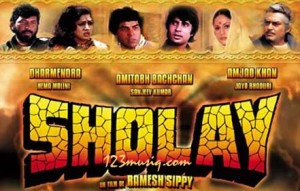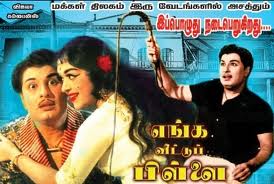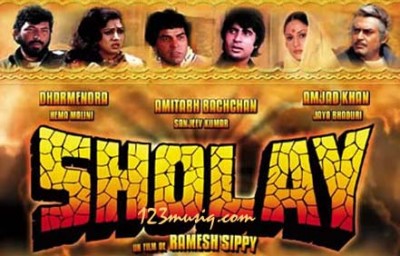by S Viswanathan
Let me go down the memory lane of tinsel town.
There are acute signs of domination of cinema in the lives of people in what I view as my past years. Cinema was inextricably through the warp and weft of what I may call social, cultural, moral and psychological aspects of my being. Back by say, five decades, cinema was confined to bigger screen (16 mm too very rare) – with most commanding width being 35 mm and exceptional films in wider versions of cinemascope or 70 mm stereophonic versions.
Cinema was necessarily a blown-up version of life which dug deep into the psyche of viewers. Such screens coming to life was more than an escape for the audience; it was all too real and had absolute oneness with the medium. Crowds were all too emotional and vulnerable enough to believe anything flashed onto screen – even hyperbolic situations. Yes, cinema defined life and determined the mentality of people.
Given such gullibility and hunger for entertainment, cinema, I can say, certainly brain-washed viewers.
Myths of heroes became ideals and achievable, honourable, worshippable qualities. The hero was portrayed in stark contrast to the villain to boost the former’s popularity, so much so that one of my colleagues used to remark: “The villain is responsible for the hero’s monstrous success.”
While morals were hyped by magnificent screens and taken seriously by the population, it is not so currently. Cinema is not as dominant a force today as it was in my times. Films have become more accessible, are forgotten quickly and characters do not hold sway over the minds of the viewers as the MGRs and Sivaji Ganesans of yesteryear did.
Technology has made irreversible and deep in-roads into how cinema gets to the masses; cinema has permeated the diminutive order through discs and then USB drives and Micro SD cards. Computers, now Tablets and mobiles in large numbers are media carrying films. The screen continues to be a magnificent presence, vivid, accurate and three dimensional in light and sound. But there are no long and expectant queues. Net booking is through.
Commerce is also transformed. Films are more in number, get made quicker and on micro budgets. Movies get turned over and out of theatres sooner. The sole goal of the moviemaking fraternity seems to be the extraction of maximum footfalls and viewership into multi-film complexes with innumerable shows of the same movie.
 Do you at all see any “25th day” poster, leave alone “50th day”? Are you day-dreaming? Most films are driven out of theatre within 15 days for sure. Celebrating 100 days, Silver Jubilee and Golden Jubilee are historic relics today. ‘Enter the Dragon’ ran for a year at a theatre at Chennai in seventies. So did ‘Sholay’, ‘Bobby’ and ‘Yaadon ki Baaraat’.
Do you at all see any “25th day” poster, leave alone “50th day”? Are you day-dreaming? Most films are driven out of theatre within 15 days for sure. Celebrating 100 days, Silver Jubilee and Golden Jubilee are historic relics today. ‘Enter the Dragon’ ran for a year at a theatre at Chennai in seventies. So did ‘Sholay’, ‘Bobby’ and ‘Yaadon ki Baaraat’.
The important aspect of melodies as integral to the story and the film is lost today. Where are the haunting melodies? This genre has ceased accruing, long back. Present tunes are so short-lived. Most of them are lost in the crowd. Songs are sensational and with no discriminating audience nor intrinsic value and beauty! What a contrast this poses given that classics from yesteryear rule even today for their tuning, instrumental brilliance and blending with the song. Despite lacking in technical advancement in reproduction in those years, the soul in them is all too real and undying. Such rich tunes tend to have their innocence and nativity exploited in re-mixes!
Recently, I made a choice selection of lullabies for my grandchild, and naturally, most of them were marshalled old timers with no song from the recent times making to the list.
Another aspect to the films of those years that is etched in my memory is the rich background score. Equivalents of such themes are too rare now-a-days. The title music of ‘Sholay’, the common undercurrent theme of Raj Kapoor’s films are a few of these.
There is nostalgia about us. But such fine aspects of video and audio refuse to lie buried and silent in the cacophony trend presently running  around. In fact, the classics stand out and are cherished by present generation too. I mean those who are keen and discriminating and have a delicate taste in music and fine cinema. I remember legendary music director MS Viswanathan saying: “There are no old and new songs. There are only good and bad songs.”
around. In fact, the classics stand out and are cherished by present generation too. I mean those who are keen and discriminating and have a delicate taste in music and fine cinema. I remember legendary music director MS Viswanathan saying: “There are no old and new songs. There are only good and bad songs.”
The one advantage that technology has thankfully provided is easy access to these old movies in a way that can be preserved and heard and watched over and over again, not only by people of my generation but the newer ones too. Watching ‘Sholay’ or ‘Enga Veetu Pillai’ on TV or DVD these days still reminds me of the whistles, cheers and tears that were shared with my fellow movie watchers in the cinema hall.
Viswanathan Subramanian is a retired banker who is enjoying retirement life pursuing his interests. He loves poring over business newspapers and journals and making notes. Spirituality also interests him, and so a good number of Sri Ramana Maharishi’s and Jiddu Krishnamurthy’s books find space in his bookshelf. He is extremely passionate about movies and music too. You are sure to find some good old English movie DVDs and an enormous collection of old mp3 Hindi and Tamil songs at his place!





